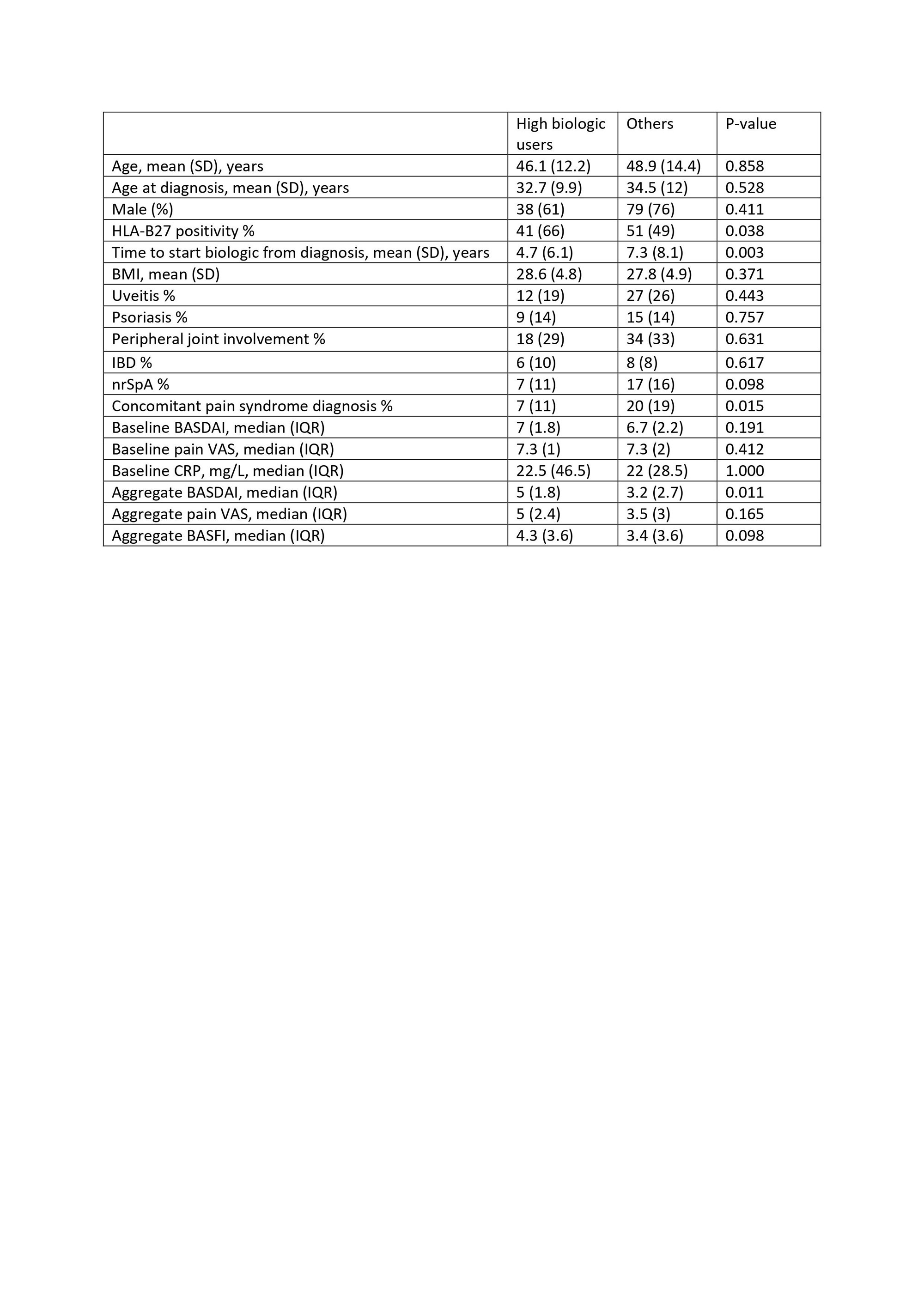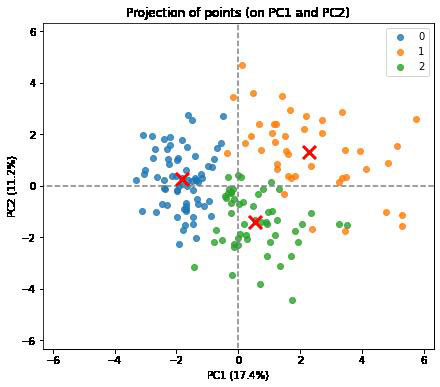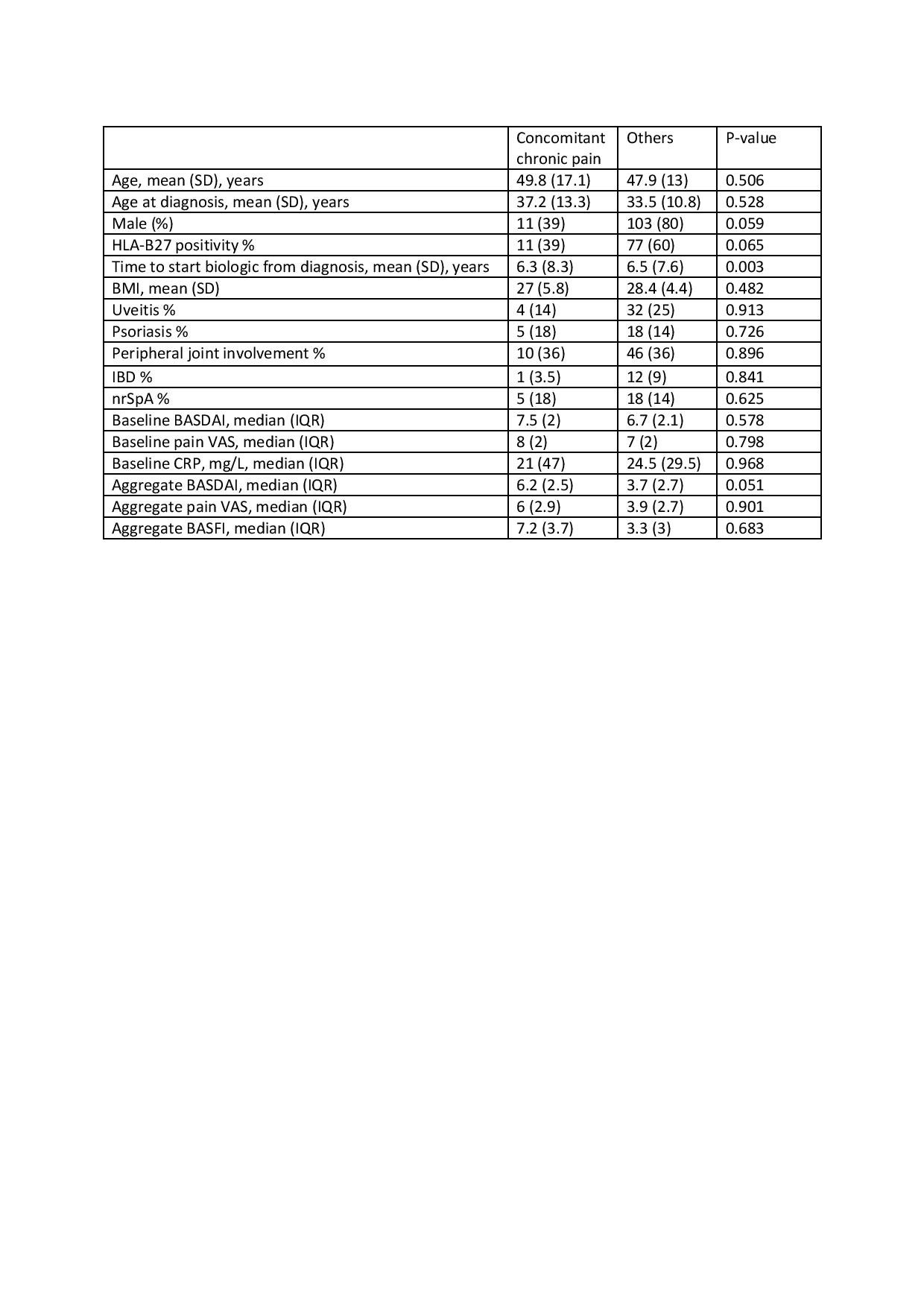Session Information
Date: Saturday, November 12, 2022
Title: Spondyloarthritis Including PsA – Treatment Poster I: AxSpA
Session Type: Poster Session A
Session Time: 1:00PM-3:00PM
Background/Purpose: To determine if there is a significant variation in biologic usage in axSpa patients and to identify factors associated with it.
Methods: We collected retrospective data of all patients of axial spondyloarthritis who had received biologic therapy for their disease in our designated AS clinic. Our outcome measure was ‘high biologic usage’ (defined as use ≥ 3 biologics/tsDMARDs and/or ≥ 2 biologic pathways targeted for therapy). We used multivariate logistic regression analysis to identify clinical factors associated it. We analysed patient age, sex, BMI, concomitant presence of chronic widespread pain, HLA-B27 positivity, rSpA presence, extra-articular disease manifestations, time to initiate biologic therapy from diagnosis and disease activity measures (BASDAI, pain VAS, BASFI and CRP) to look for significant predictors. Additionally, we did a cluster analysis on our cohort to see whether response to biologic therapy is a determinant in cluster formation.
Results: Out of a total of 227 patients in our axSpA cohort, 166 (71% male, mean age 48 years) had received biologic therapy. Of these, 62 (27%) met the definition of high biologic usage. Our analysis identified four factors which were significantly associated with our outcome – HLA-B27 positivity (positive correlation), time to start biologic from diagnosis (surrogate for sustained response to NSAIDs, negative correlation), concomitant chronic widespread pain (negative correlation) and aggregate BASDAI on biologics (positive correlation). A subgroup analysis of axSpa patients with chronic widespread pain found two significant associations with the diagnosis – female sex (positive correlation) and aggregate BASDAI (significantly higher). Cluster analysis revealed three distinct groups and the primary drivers of segregation were sex of the patient, chronic widespread pain diagnosis, disease activity burden and response to biologic therapy (both TNFi and IL-17i).
Conclusion: There is a significant cohort of axial spondyloarthritis patients who met our criteria of ‘high biologic usage’. HLA-B27 positivity, decreased response to non-biologics (as assessed by time to start biologic from disease diagnosis) and higher aggregate BASDAIs are associated with greater biologic usage. BASFI was found to be an underutilized disease activity measure as it did not influence biologic switching. A concomitant diagnosis of chronic widespread pain has the confounding features of being associated with a higher aggregate BASDAI but lower biologic usage revealing the impact this diagnosis has on clinical decision making. In our cluster analysis we found that clinical phenotypes did not influence separation which was instead driven by disease burden, response to biologic therapy, patient sex and presence of chronic widespread pain.
To cite this abstract in AMA style:
dua D, Blake T. Difficult to Treat Spondyloarthritis: Patients with a High Biologic Switch Rate and the Factors Influencing It; A Real World as Clinic Experience [abstract]. Arthritis Rheumatol. 2022; 74 (suppl 9). https://acrabstracts.org/abstract/difficult-to-treat-spondyloarthritis-patients-with-a-high-biologic-switch-rate-and-the-factors-influencing-it-a-real-world-as-clinic-experience/. Accessed .« Back to ACR Convergence 2022
ACR Meeting Abstracts - https://acrabstracts.org/abstract/difficult-to-treat-spondyloarthritis-patients-with-a-high-biologic-switch-rate-and-the-factors-influencing-it-a-real-world-as-clinic-experience/



